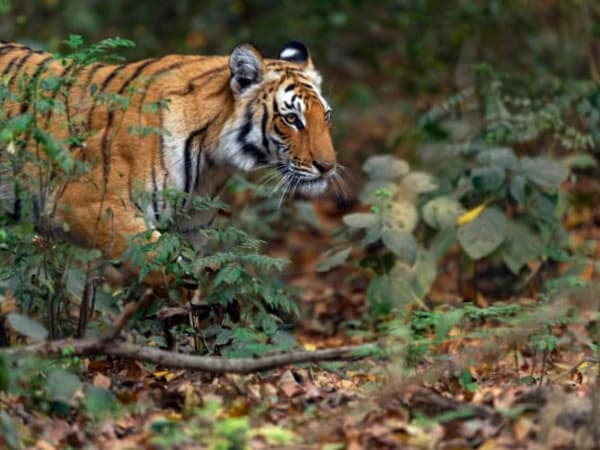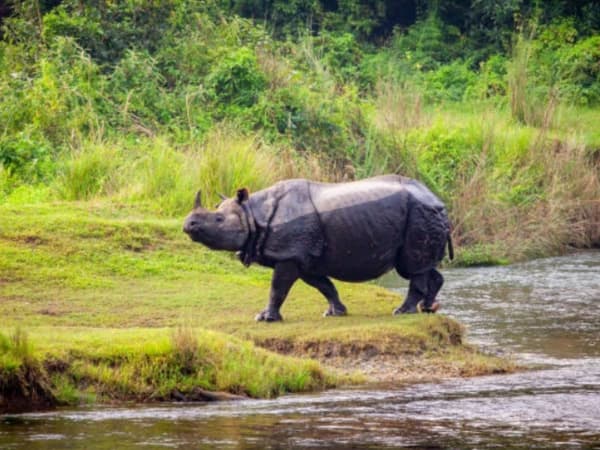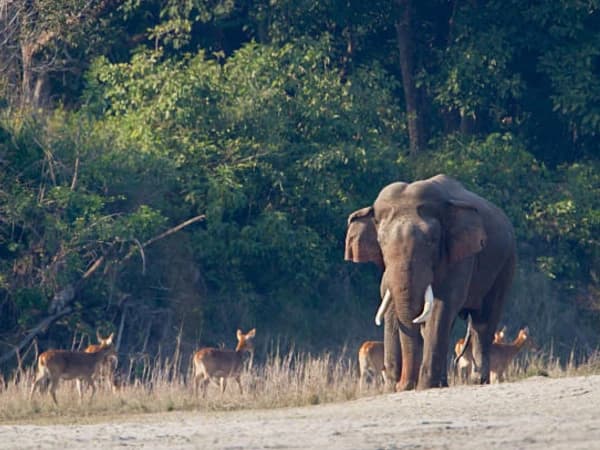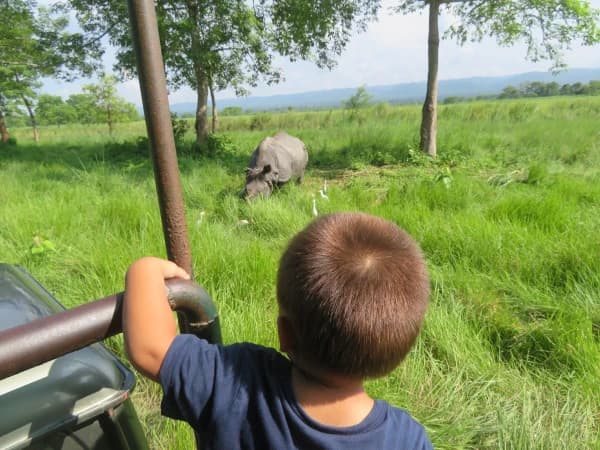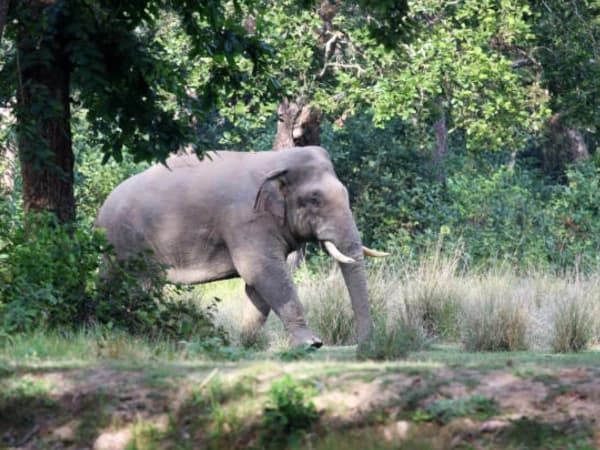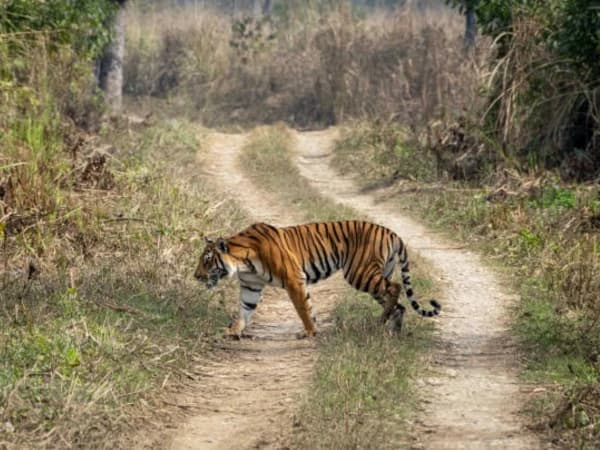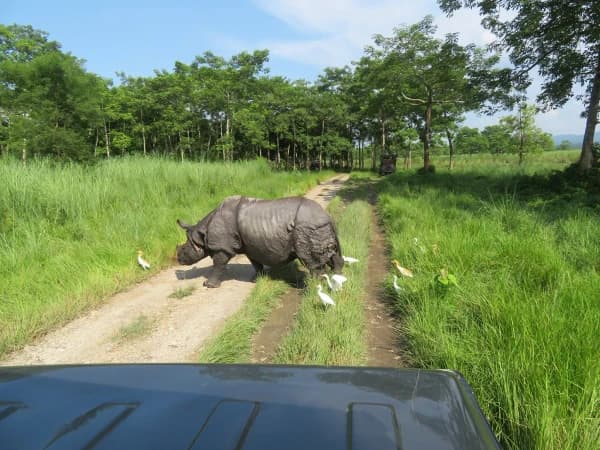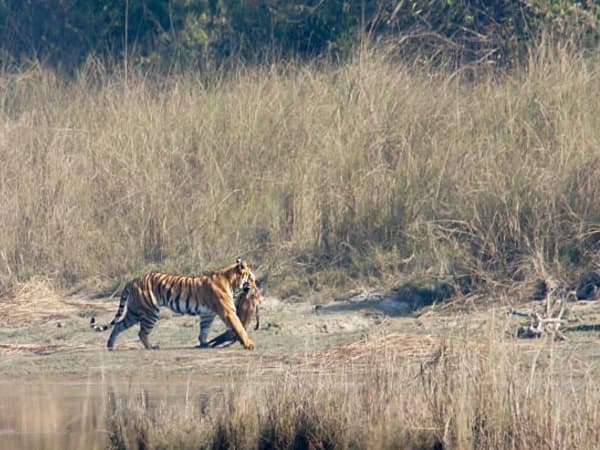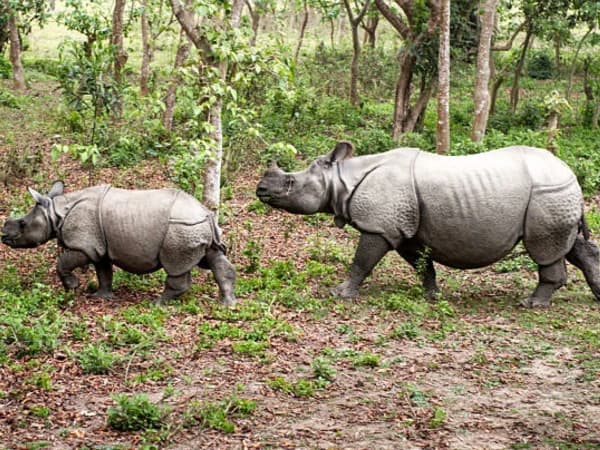In the steaming jungles and broadleaf forests of Nepal’s south-central lowlands, there is a place where Bengal tigers stalk the shadows and one-horned rhinos move fearlessly through the tall grass like armored tanks. This is the Chitwan National Park, and it’s a forest reserve of stunning biodiversity and striking scenery. The park lies at the outermost limits of the Himalayan foothills, and it’s here that you’ll discover lush natural landscapes positively teeming with wildlife. During a safari in Chitwan National Park, it’s possible to find herds of wild elephants foraging for food, half-submerged crocodiles waiting for their moment to strike, and the occasional shaggy-furred sloth bear ambling through the woods. There are also more than 350 species of birds within the bounds of the park, offering endless hours of fascination for keen-eyed nature lovers. The park’s alluvial floodplains, riverine forests, and sprawling grasslands support a staggering number of different animals—as far as we’re concerned, Chitwan is a serious contender for the best national park in Nepal.
Chitwan National Park is also one of Nepal’s most resounding conservation success stories, with populations of its rare tigers and rhinos steadily increasing in recent decades. The park was founded in 1973 as the Royal Chitwan National Park, and today its forested expanse covers an area of more than 950 square kilometers. Thanks to the dedicated efforts of its rangers, the park is one of the safest places to explore the wilderness of Nepal. While some travelers choose to venture into the park on the back of a tamed elephant, Iconic Himalaya Adventure strongly encourages its guests to choose more ethical activities here in the park. Because the process of taming elephants is often cruel and controversial, we prefer to steer our guests away from riding or interacting with them.
Fortunately, there are still many ways to get up close and personal with Chitwan’s iconic wildlife. The most popular way to enjoy the wilds of the national park is to book a Jeep safari. With the help of an experienced guide, you’ll explore the winding tracks of the park to search for tigers, rhinos, and more. We’ve also arranged for our safaris to include a slower-paced, intimate wildlife experience on the gentle waterways of the Rapti River. As you board a traditional canoe to cruise along its banks, you’re sure to see plenty of colorful birdlife, as well as the occasional crocodile resting in the shallows. Finally, you’ll get to enjoy the jungle from an entirely new perspective as we embark upon a walking tour of Chitwan National Park. This experience offers an unprecedented level of immersion in the wilderness, where you’ll get a firsthand look at some of the park’s smallest and most charismatic animal species.
Highlights
- Embark on a thrilling Jeep safari in Nepal’s best national park.
- Keep your eyes peeled to spot Nepal’s apex predator: the elusive Bengal tiger.
- Cruise the gentle waterways of the East Rapti River to spot birds, crocodiles, and more.
- Discover the unique traditions of southern Nepal’s Tharu people.
Major Attractions of a Jungle Safari in Chitwan National Park
A safari in Nepal is all about wildlife and wild places, and the Chitwan National Park is no exception. This spectacular wilderness hosts a dizzying array of animal and plant species, and your guides will make sure you see as much as possible during your time here. Of course, first on most visitors’ lists is the beautiful Bengal tiger: there are few sights which can compare to seeing the rippling orange fur of this big cat as it stalks beneath the forest canopy. While no one can guarantee a tiger sighting during your safari, Chitwan National Park is the best place in Nepal to find them. The park is also home to the rare one-horned rhinoceros, which wanders the grasslands of this wilderness like something from a bygone era.
But it’s not all about megafauna in the Chitwan National Park. You’ll also find a variety of smaller animals here: the park is home to four species of deer, including the enigmatic barking deer. Chitwan National Park is also a birdwatcher’s paradise, and there are few places in Nepal where you’ll be able to tick as many unique species from your list. And if you’re looking for animals with more teeth, you won’t want to miss the chance to visit the park’s breeding center for the critically endangered gharial. This crocodilian is native to the Indian subcontinent and can be easily identified by its narrow snout. All told, there is a lifetime’s worth of animals to see here in the Chitwan National Park—and we’ll do our best to make sure you see them all.
Who Can Enjoy a Jungle Safari in Chitwan National Park?
Embarking on a safari in the Chitwan National Park involves bouncing along dusty tracks and dirt roads in an open-top Jeep, and as long as you don’t mind a bumpy ride, there are no particular age limits on this activity. While older children are more likely to enjoy the educational aspect of a guided safari in Chitwan, even younger children will benefit from this adventure in the great outdoors. Please make sure that all children are accompanied by an adult, and please let Iconic Himalaya Adventure know whether anyone in your party has a health condition. We can also discuss any questions you might have surrounding other safari activities available here in Chitwan, like nature walks and canoe trips on the Rapti River.
How Safe is a Safari in the Chitwan National Park?
Going on a jungle safari in the wilds of Nepal does carry some element of inherent risk, but while the animals in Chitwan National Park are wild, the guides and rangers here are trained to understand and predict their behavior. Many of the guides in Chitwan National Park have inherited their knowledge from their parents, and they know these forests and the animals in them like the backs of their own hands. Iconic Himalaya Adventure also partners with the best safari outfitters, making sure to use only well-maintained vehicles and to work with drivers who adhere strictly to park regulations. Your guides will know exactly how closely an animal may be safely approached, and they’ll recognize all of the telltale signs that suggest where stunning animals like rhinos and tigers might be found. When you’re on safari in the Chitwan National Park, you can rest easy and enjoy the ride—you’re in good hands.
When is the Best Time to Visit Chitwan National Park?
While it’s possible to visit Chitwan National Park at any time of the year, there are a few variables to consider when it comes to more comfortable weather, better wildlife sightings, and fewer crowds.
-Many travelers visit Chitwan during the months of March and April, when flowers bloom and the humidity of the jungle drops. While springtime does bring high temperatures, that means you’ll have an easier time spotting animals cooling off in the rivers and lakes of the park.
-In southern Nepal, the monsoon rains of summer come a little bit later in the year, starting in May and reaching their peak in July. While heavy rain can obscure wildlife views and transform dirt roads into mud, you can enjoy a crowd-free safari at this time of year.
-For our money, the best time of year to visit Chitwan National Park starts in September and runs through January or February of the following year. Thinning foliage affords better visibility of rare predators, and while humidity remains high, cooling temperatures make for more comfortable jungle walks and canoe excursions.
If you’re still planning your Chitwan safari and don’t know when to visit this stunning natural reserve, we would be happy to help plan your adventure. Reach out to us today!
